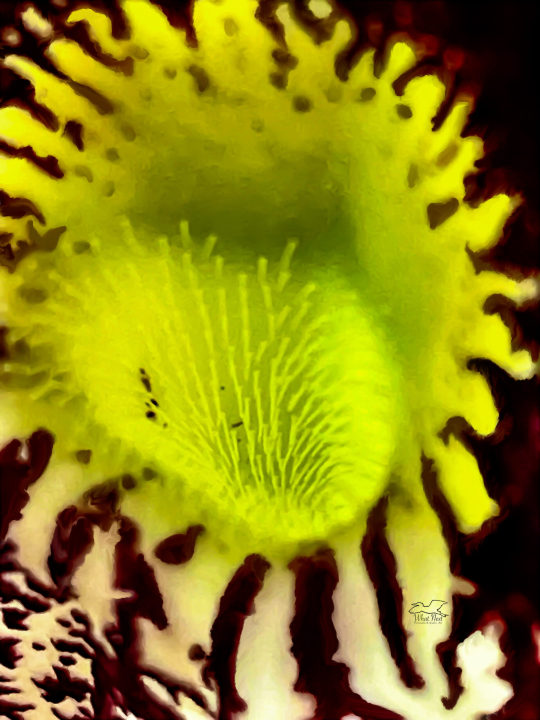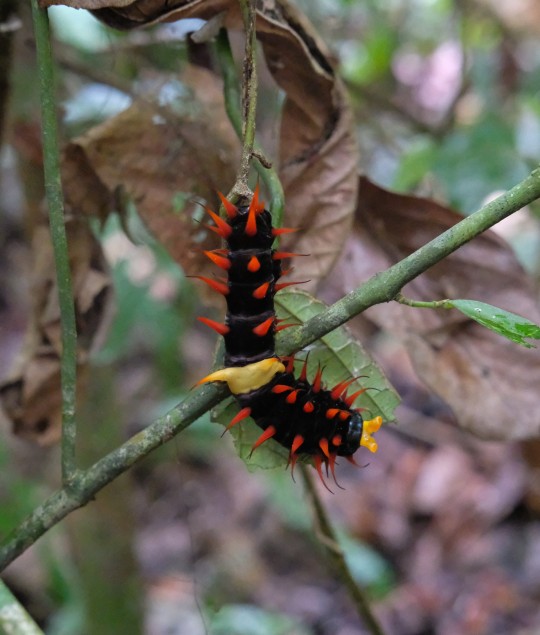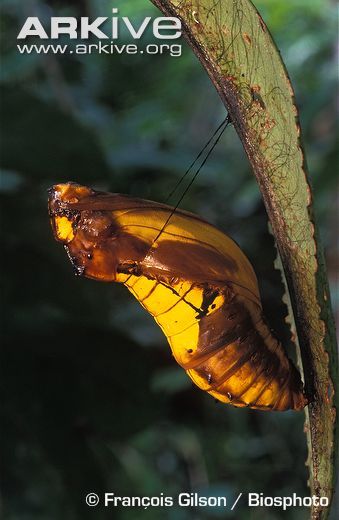#pipevine flowers
Text
It’s Interesting to Look Deep into the Throats of Flowers
It’s Interesting to Look Deep into the Throats of Flowers features a macro photo of the throat of a pipevine flower. It explains why the author/artist enjoys taking images like this.
Deep
Have you ever taken a close look down the throat of a deep throated flower? I’m not sure exactly why they fascinate me, but, but I’m always curious about what’s down there. Maybe I want to see the same view as a bee does, I’m not sure. Whatever the reason, I like doing it even more now that I have a macro lens. The macro lens gives an even better view of what’s down inside those flowers.…

View On WordPress
#abstract art#abstract art in nature#art in nature#birthwort#calico flower#colorful wildflowers#Dutchman’s pipe#exotic looking flowers#exotic looking wildflowers#Florida wildflowers#inside flowers#inside pipevine flowers#inside wildflowers#macro photographs#macro photography#nature photographs#nature photography#pipevine flowers#pipevines#wildflower photographs#wildflower photography#wildflowers
0 notes
Text







Celebrated with some family at the botanical garden today. Happy to see so many pollinators
#apis#pipevine swallowtail#bees#bumblers#california poppy#summer#sunny#photoset#yellows#orange#orange flowers#yellow flowers#green#lensblr#bugblr#arthropods#photographers of tumblr#original photography#photographers on tumblr#sonya7riv#sonya7r4#flora
31 notes
·
View notes
Photo

#insect#butterfly#pipevine swallowtail#flower#photographers on tumblr#textless#amadee ricketts#black#pink#red#salvia#summer#july#in the yard#garden
158 notes
·
View notes
Text

Aristolochia californica
This vine with its odd-looking flowers is a native of northern California, and is sometimes called the California pipevine. The idea here is that the flowers are reminiscent of a meerschaum pipe, but this requires a little imagination. The flowers are visited by the Pipevine Swallowtail butterfly, which depends on the vine for its life cycle. Aristolochia lends its name to the family Aristolochiaceae, with many of the species having flowers just as odd and fascinating as this one.
-Brian
29 notes
·
View notes
Note



(i meant to send these days ago but I fuckin forgor bjdjdnd)
I found an unidentified little guy in my backyard a few days ago! had to use an empty flower pot to get it back in the grass bcuz I wasnt sure if he was safe to touch
BAMBINO…. inat says its a pipevine swallowtail caterpillar :D
2 notes
·
View notes
Text
🐝Send in a number + Character and I'll draw them in an outfit or as a creature based on that insect🦋
Allotopus Beetle
Apollo Butterfly
Assassin Bug
Atlas Moth
Bald-Faced Hornet
Banded Darter
Banded Demoiselle
Beautiful Demoiselle
Bhutan Glory Swallowtail
Black Swallowtail Butterfly
Bullet Ant
Bumblebee
Butterfly Dragonfly
Cabbage Butterfly
Cattlehearts Swallowtail
Common Batwing
Common Bluebottle Butterfly
Common Brimstone
Common Rose Swallowtail
Conehead Mantis
Cream-Spot Tiger Moth
Creobroter
Cuckoo Wasp
Death's-Head Hawkmoth
Devil's Flower Mantis
Differential Grasshopper
Drain Fly
Eastern Tiger Swallowtail
Eighteen-Spotted Ladybird
Elephant Hawkmoth
Elephant Mosquito
Emerald Bee
Emperor Dragonfly
European Hornet
European Mantis
Eyed Ladybug
Fire Ant
Five-Spotted Hawkmoth
Fork-Horned Stag Beetle
Fourteen-Spotted Ladybird
Ghost Mantis
Giant Leopard Moth
Giant Long-Legged Katydid
Giant Malaysian Leaf Insect
Glasswing Butterfly
Goliath Beetle
Golden-Ringed Dragonfly
Great Black Wasp
Green Grasshopper
Green June Beetle
Green Snaketail
Green Stag Beetle
Halyzia Sedecimguttata (aka orange ladybird)
Hercules Beetle
Honey Bee
Housefly
Hummingbird Clearwing
Hummingbird Hawkmoth
Impatiens Hawkmoth
Jerusalem Cricket
Jewel Beetle
Lime Hawkmoth
Long-Legged Fly
Luna Moth
Monarch Butterfly
Mosaic Darner
Mud Dauber
Oleander Hawkmoth
Orchid Mantis
Painted Lady Butterfly
Paper Wasp
Peacock Butterfly
Pharaoh Ant
Picasso Bug
Pipevine Swallowtail
Poplar Hawkmoth
Queen Alexandra's Birdwing
Question Mark Butterfly
Red Admiral
Rosy Maple Moth
Ruddy Darter
Scorpion Fly
Silverfish
Small Tortoiseshell
Snakefly
Southern Hawker
Southern Flannel Moth
Spicebush Swallowtail
Spiny Leaf Insect
Sunset Moth
Tailed Jay Butterfly
Tarantula Hawk
Thorn Bug
Tiger Mosquito
Twentytwo-Spot Ladybird
Ulysses Butterfly
White-Lined Sphinx
White Witch Moth
Yellow Jacket
Zebra Swallowtail
#drawing prompt#art prompt#oc prompt#creature prompt#monster prompt#clothing prompt#bug#art challenge#insect
11 notes
·
View notes
Photo






Queen Alexandra's birdwing is a species of butterfly in the genus Ornithoptera which is native to the forests of the Oro Province in eastern Papua New Guinea. The species was first described in 1906 by Albert Stewart Meek, a collector employed by Walter Rothschild to collect natural history specimens from New Guinea. In the next year, Rothschild named the species in honour of Alexandra of Denmark. Queen Alexandra’s birdwing is notable at being exceptionally hard to catch often flying several hundred feet in the air and resting in the branches of the jungle canopy. To overcome this difficult Meek resorted to taking the first specimens with aid of a small shotgun, however in the months to come Meek soon discovered the caterpillar forms and began to dutifly breed them in captivity. Female Queen Alexandra's birdwings are considerably larger than males with markedly rounder, broader wings reaching around 3 inches long, 12 grams in weight, and sporting a 9 to 11 inch wingspan, compared to males at around 1.5 inches long, 6 grams in weight, with a 6-8 inch wingspan. It is the largest butterfly species on earth. When the wings are open, the female butterflies display a brown coloration with white marks patterned in a pair of rows of chevrons in their primary wings, while the hindwings are also brown, but having submarginal lines of centered triangles in dull white to yellow. The males show an iridescent blue-green hue in both the primary and secondary wings along with a black band at the center. When the wings are closed, both the sexes display a fainter version of the dorsal sides along with darker veins. As caterpillars they have a black body with red tubercles all over, as well as a saddle or band of cream color at the center of their body and almost exclusively feed upon the Aristolochia schlecteri a species of toxic pipevine. It takes around six weeks for the insect to reach the stage of the chrysalis. The cocoon has a golden yellow to tan coloration with distinct black marks on the body. This stage lasts for about a month or sometimes a little more before the adults emerge. As adults Queen Alexandra’s birdwing feed on the nectar of a variety of flowers and are themselves occasionally preyed upon by birds and orb weaver spiders. During there brief 3 month life span as adults, this butterflys mate frequently, often every morning. With females being capable of laying over 240 eggs throughout there life.
#pleistocene#pliestocene pride#butterfly#butterflies#giant#queen#alexandra#bird#wing#birdwing#queen alexandra's birdwing#birdwing butterfly#bug#insect#moth#caterpillar
10 notes
·
View notes
Text






continuation of my series on flower fairies! learn about butterfly species and their host plants through gay little whimsical creatures :-)
featured here are: orange oakleaf (kiss me under the garden gate), pipevine swallowtail (dutchman’s pipe), and question mark (stinging nettle)!
part 1 | 2 | 3 | 4 | 5 | 6 | 7
6 notes
·
View notes
Text


Daylilies: not just enjoyed by people! 🦋
(I’m not sure if these very tall, very large orange daylilies came from Miss Ann or were rescues from the building. Probably a black-morph Eastern Tiger Swallowtail butterfly, but I didn’t get a good enough look for long enough to make sure it wasn’t a pipevine or spicebush instead, seeing how it had largely disappeared inside the flower and then flitted right away!)
0 notes
Text

Wall of Birds: Red Winged Blackbirds, Pocosin Lakes Refuge

The Pride of America: Bald Eagle! The Bald Eagle, chosen as a National Emblem in 1782, is protected under the Federal Bald and Golden Eagle Protection Act.





1– When a hummingbird sips nectar from a flower, it also picks up pollen, a fine powder that helps plants reproduce. The pollen sticks to the bird’s feathers and is transferred to the next flower the flier visits. 2– Frogs feast on slugs, snails, and other creepy-crawlies that harm garden plants by munching on leaves. 3– These nut gatherers bury their treats to eat later, but they don’t always remember their hiding spots. The nuts and seeds squirrels forget about sprout as new plants. Photographs By Matt Jeppson/Shuttestock



1– Every fall, millions of Monarch Butterflies make a nearly 2,500-mile journey to the mountains of Mexico to mate. During their return trip, females lay their eggs on milkweed plants. Photograph By Sari Oneal /Shutterstock 2– North America’s Red-spotted Purple Butterfly is a trickster. The insect is thought to mimic the pipevine swallowtail, which birds avoid because of its bitter taste. And the red-spotted’s larvae look like bird droppings! Photograph By Tom Vezo/NPL/Minden Pictures 3– Found in the eastern half of the United States, The Eastern Tiger Swallowtail lays its eggs on woody plants like wild cherry and cottonwood trees. Photograph By Joseph Lacy/Alamy
0 notes
Text
The Pipevine has a Unique and Interesting Looking Flower
The Pipevine has a Unique and Interesting Looking Flower shows readers the flowers of the elegant pipevine or calico flower. It also discusses that this is an invasive species in Florida and how the author plans to deal with that.
Pipevine Flower
Pipevine (Aristolochia spp.) also known as birthwort or Dutchman’s pipe are climbing vines that can be found in a large variety of climates and habitats. The type that grows on my property happens to be (Aristolochia littoralis). It’s also sometimes called elegant pipevine or calico flower. It’s native to South America, but it commonly grows here in Florida. It is considered…

View On WordPress
#birthwort#calico flower#colorful flowers#Dutchman’s pipe#elegant pipevine#exotic flowers#Florida flowers#Florida wildflowers#flower photographs#flower photography#large flowers#photography#pipevine#pipevine flowers#pipevine swallowtail butterflies#pipevine swallowtail caterpillar#wildflower photographs#wildflower photography
0 notes
Text


Vicki DeLoach
#butterfly#butterflies#nature#flowers#photography#Pipevine swallowtail#Great Spangled Fritillary#insects#plants#orange#pink#yellow#flower#lantana
652 notes
·
View notes
Photo









Caterpillars aplenty, caterpillars galore.
Cochise County, Arizona, September 2021.
#insect#caterpillar#arizona#macro#photographers on tumblr#textless#amadee ricketts#green#yellow#stripes#flower#wildflowers#monarch#pipevine swallowtail#fall#autumn#september#butterfly milkweed#mesquite#camouflage#red
246 notes
·
View notes
Photo

Aristolochia californica
This vine with its unusual flowers is native to northern California, and plants in its genus are sometimes referred to as “Dutchman’s Pipe vines” because of the shape of the flowers. The plant serves as a host to the pipevine swallowtail butterfly, whose caterpillars are avoided by potential predators because of the toxins they ingest from eating the plant’s leaves.
-Brian
26 notes
·
View notes
Text

A Blue Butterfly on Pink Petals
Buy here!
ID in alt text
#art#watercolor#watercolour#watercolour art#watercolourpainting#artwork#painting#my art#nature painting#blue butterfly#butterfly#flower#pink flowers#redbubble store#insect tw#realistic art#pipevine swallowtail#swallowtail butterfly
25 notes
·
View notes
